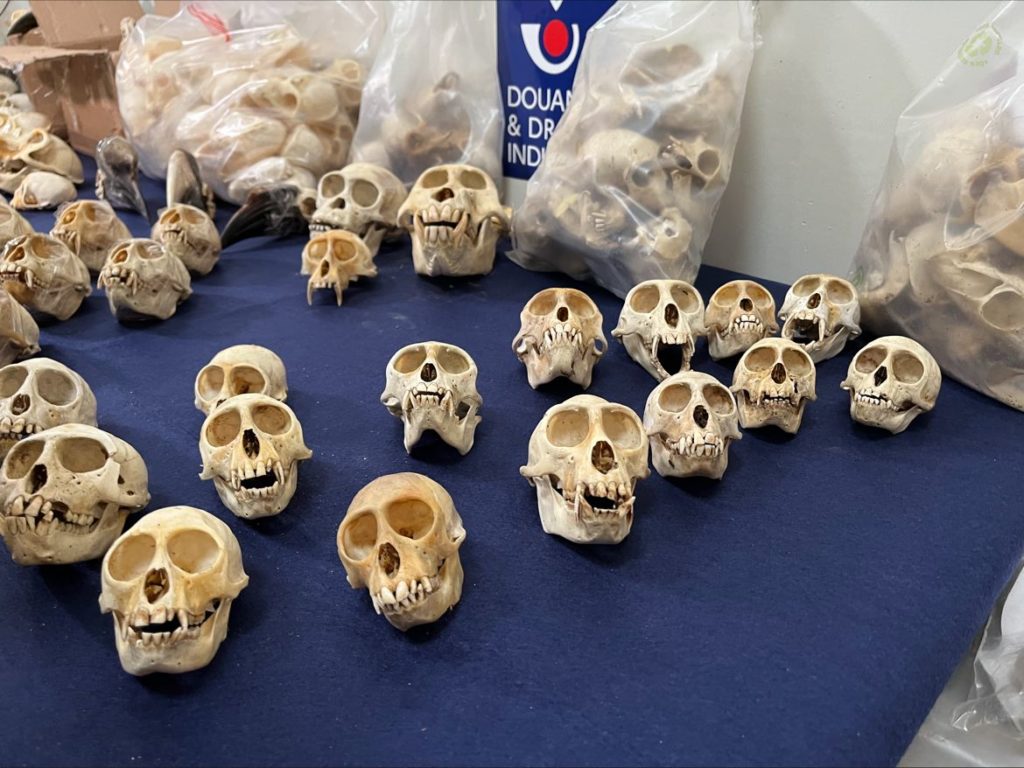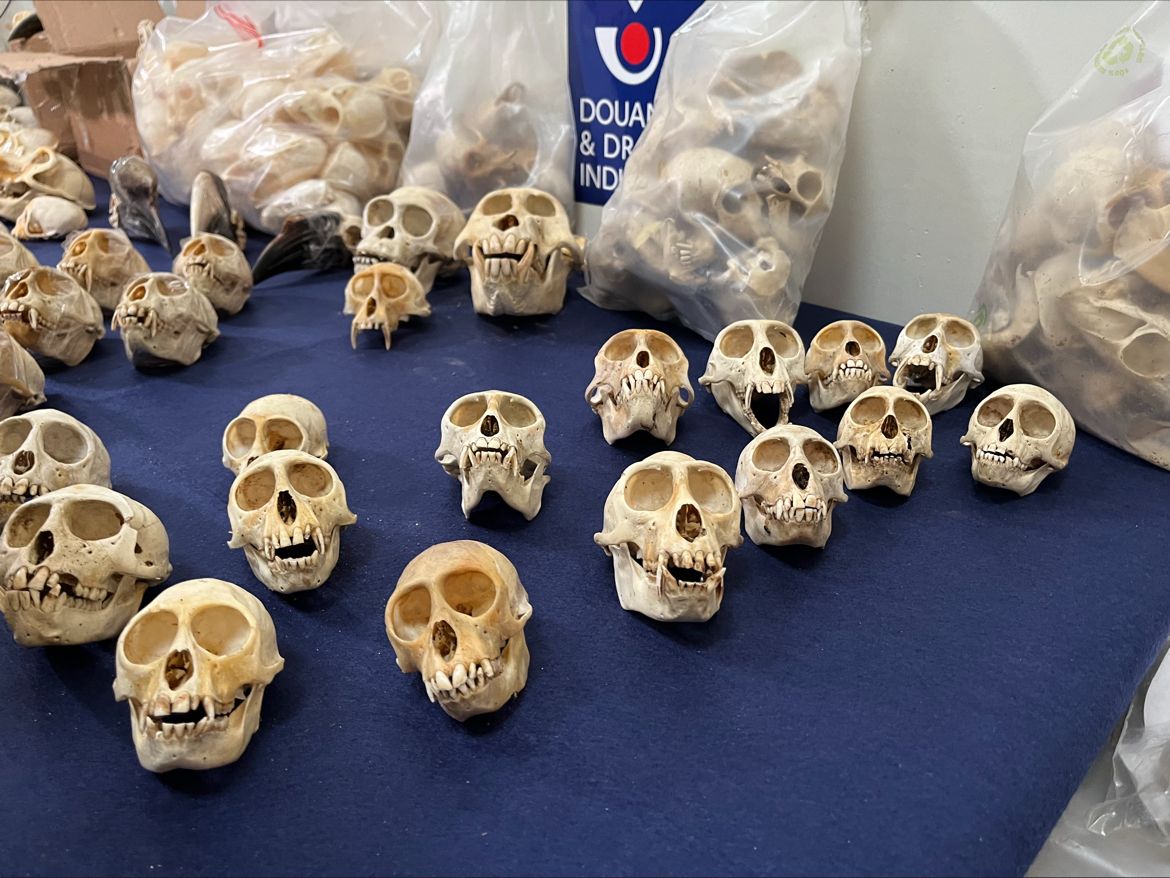
On September 21, 2023, one year after CITES COP 19, I met with the General Directorate of Customs during a ceremony where 392 primate skulls and 326 skulls from other protected species (otters, felines, monitors, birds of prey, etc.) were handed over to the Natural History Museum of Aix-en-Provence. All of these skulls originated from poaching activities. This ceremony highlighted the urgent need to take action against wildlife trafficking, a phenomenon that affects the entire world.
These skulls come from primates protected by CITES and serve as silent witnesses to crimes against nature. Therefore, I have decided to place the issue of wildlife trafficking at the top of the French IUCN Committee’s priorities. We have initiated serious and effective work aimed at combating this growing scourge. In this regard, INTERPOL estimates that this illegal trade is increasing by 7% annually.
Thus, with the French Committee, we have established partnerships with our American counterparts, recognizing that protecting wildlife requires seamless international cooperation. Similarly, we have initiated working meetings that bring together influential high-profile figures. Among them, Marc Fesnau, Minister of Agriculture and Food Sovereignty, and General Sylvain Noyau, Brigadier General of the Command for the Environment and Health, have answered the call.
The Committee has also made several recommendations emphasizing the importance of strengthening control systems. It is necessary to homogenize and better coordinate territorial action to enhance the effectiveness of combating this trafficking. Currently, the capabilities and resources deployed vary between the different departmental divisions of the OFB. Additionally, stakeholders in this area must have access to theoretical and technical training that enables them to identify species and understand administrative procedures.
The fight against wildlife trafficking is a complex battle, but it is imperative that we act now. The consequences of inaction are too great, threatening the ecological balance of our planet and the very survival of many species. By joining forces and collaborating on national and international levels, we can reverse the trend and protect the invaluable wealth of our biodiversity for future generations. It is time to act, determinedly and collectively, to preserve the wildlife that shares our planet.

Comments are closed